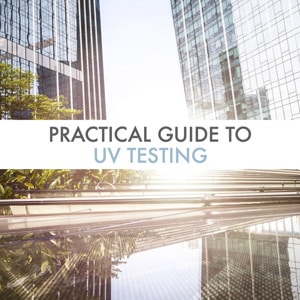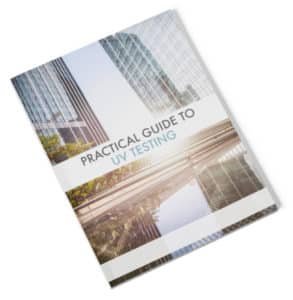ASTM D7869
Xenon Arc Exposure Test with Enhanced Light and Water Exposure for Transportation Coatings
Micom offers ASTM D7869 Xenon Arc Exposure Testing with Enhanced Light and Water Exposure for Transportation Coatings. This practice was first published in 2013 to replace and improve SAE J2527 – Performance Based Standard for Accelerated Exposure of Automotive Exterior Materials Using a Controlled Irradiance Xenon-Arc Apparatus.
ASTM D7869, based on ASTM G155, is the result of a decade of research by leaders in the automotive, aerospace, coatings and weathering testing industry. This practice is gaining momentum as it is believed to be a much better simulation than the older test methods and practices.
The quantum steps ASTM D7869 provides are three folds:
- The optical filter system has much tighter tolerances, especially in the short wavelength UV that have a deep impact on polymer degradation
- Recreates very closely sub-tropical moisture variations
- Recreates very closely sub-tropical temperature variations including rapid thermal cycling
ASTM D7869 allows recreating in the lab many key mechanism failures including colour changes, loss of gloss, photo oxidation and delamination.
This accelerated UV aging technique is comprised of using operating procedures for a controlled irradiance xenon arc light and water apparatus. A combination of lamps and optical filters produces irradiance similar to sunlight in the UV and visible range while also simulating the water absorption and stress cycles automotive exterior coatings are exposed to in natural conditions. This type of accelerated aging is also applicable to conditions withstood by vehicles such as aircraft, trucks and rail cars.
Xenon Arc Exposure – Use and Factors to Be Considered
ASTM D7869 is used to simulate the physical and environmental stresses that a coating for exterior transportation applications, such as automotive, is exposed to in a subtropical climate as in Southern Florida. This climate causes particularly severe deterioration of such coatings, as long water exposures and wet/dry cycling are particularly important for this deterioration, see Coating testing, along with the high dosage of solar radiation measured by UV testing.
This practice was developed to address the deficiencies of historical tests used for transportation coatings, specifically in Automotive testing for automotive coatings as tested by ASTM G155.
We take care of testing from start to finish
So you can focus on what you do best
We get it, we're the only ones in the room excited by testing.
That's why we've fine-tuned every step of the testing process to provide you with
a fast and reliable service at a cost that will keep you coming back.
This is the Micom promise.
We take care of testing from start to finish
So you can focus on what you do best
We get it, we're the only ones in the room excited by testing.
That's why we've fine-tuned every step of the testing process to provide you with
a fast and reliable service at a cost that will keep you coming back.
This is the Micom promise.
We take care of testing from start to finish
So you can focus on what you do best
We get it, we're the only ones in the room excited by testing.
That's why we've fine-tuned every step of the testing process to provide you with
a fast and reliable service at a cost that will keep you coming back.
This is the Micom promise.
Other Related Test Methods
For additional related test methods please see ASTM testing, ASTM D2244 or Accelerated aging.
Practical UV Testing Guide
Sunlight exposure can have harmful impacts on carbon-based
materials such as coatings, polymers, textiles, and many others.
Learn more about our in-laboratory UV testing process in this guide.



 A free eBook to help you better safeguard your products from UV damage.
A free eBook to help you better safeguard your products from UV damage.